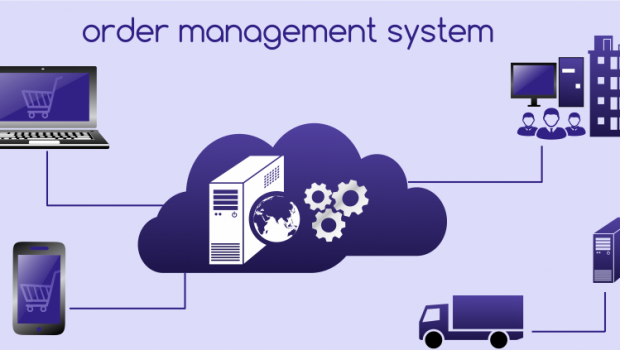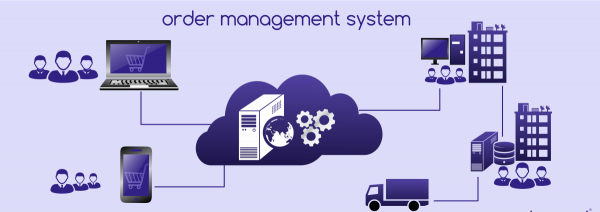Order Management System For E-Commerce – Do You Really Need It?
This certainly is a killer. I still remember how I felt when I walked into the newly opened footwear shop in my locality to purchase a shoe which had been on my mind for over a month now.
Expecting to find it (with some discount of course) I was hugely disappointed when the sales person said that they were out of stock. But I had seen the same shoe in their online store just yesterday (I’m not an ecommerce person, and I prefer brick and mortar shopping over online shopping).
The item was not available in this branch. Sigh! For all that effort of walking down the street only to find that the item is out of stock. I was still positive that the sales person could place an order online and get the item from one of their other branches. Surprise surprise! He was genuinely confused when I suggested this (maybe he was a new guy) but their POS was not integrated with the retailer’s ecommerce solution, thus failing my plan to get the shoe from another branch without having to break a sweat.
This whole experience kind of coloured the impression I had on the store brand. With many brands going the extra mile to ensure a positive customer experience with better order management systems, this store still had a long way to go. The age of omni-channel retail is slowly creeping up and an effective order management system is the key for customer satisfaction in this digital era. So what exactly is order management, and why is it so important for ecommerce?
Order Management System – A Beginning
Investing in an online order management system is a wise decision as it will keep track of orders and manage the people and processes needed to improve efficiency and customer satisfaction. The system works as a centralized hub to manage orders from all channels and plays a key role in delivering excellent customer experience by delivering orders on-time, providing order status, easy returns and more anywhere, anytime.
Back when ecommerce was something new in the market, most of the companies used the conventional way of handling the orders, with a pen and paper. 40-50 years down the lane, while many companies are still stuck up with the outdated process, the rest of the world has moved on and have adapted to a fast moving, customer-centric era.
What makes OMS so important?
The ecommerce market in its present state, has its focus completely on what the customer wants and how easy is it for him to access it. While tough competition is a major concern which has led to such changes in the industry, other factors like technology, behavioral change of the customers and many more have had their share too. With the customers expecting a seamless interaction with the retailers at any time, any place and any way they desire, the companies have had a tough job in hand.
Add to that the omni-channel approach which has completely changed the way a customer perceives his purchase. Now, it is up to the companies and the retailers to pay heed to what their customers want, and how can they provide the same, better than their rivals by quickly adapting to the ever changing expectations.
Order Management System and Ecommerce Integration – The real deal
The “hub” integrates with some of the most critical aspects of an online business to interact with each other and provide a smooth customer experience. Today, let us discuss about some of these aspects.
To begin with, the order management platform integrates and interacts with the company’s channel (sales) such as Amazon, from which the orders are automatically entered from. An integration with the shopping cart is then responsible for sending the customer’s data back to the platform which allows the company to see what people are actually loading into their carts and what kind of, or how many of these carts get abandoned.
After the places order is processed, the inventory gets automatically updates to carry forward the payments which are automatically handled by the order management system’s accounting software. With everything taken care of, finally the shipping labels (with customer details) are created and the order is sent to the fulfillment center or third party logistics company for fulfillment.
A report that studied retailers and their interests in integrations for order management system saw that integration with online stores was the most common (close to 75%) amongst some of the other key ecommerce integrations. 96% of the retailers said that integrating online stores reduced their processing time, thus improving accuracy and making it easier for them to process multiple orders through multiple channels.
Not far behind from online store integrations was the shipping service integration which allowed retailers to maintain and improve on-time delivery and hassle free returns. Imagine if your customer could buy a sweater in a store in LA and could return it back in Chicago with ease and convenience!! Also, shipping integrations allowed the retailer to automatically generate shipping labels with the exact customer details, thereby saving a lot of time especially when processing orders of high volume.
Best Practices for Order Management
With a growth in business, the number of your orders, your point of contacts and suppliers are bound to grow and the key to succeed is by handling and staying organized at such situations. So how do you keep all of it together? You can do this with the help of a reputed Fulfillment Europe provider. Lets look at some of the best practices.
Auditing Process to improve Order Accuracy
By Integrating auditing processes into the customer order fulfillment process allows the companies to increase order accuracy by a great extent. Imagine how your customer would feel if he receives a low quality product or a damages product when he orders online. This can hugely dent the customer satisfaction which you strive hard to keep high. To avoid such incidents, you can barcode all the items and make sure that each item is scanned before being packed to ensure accurate auditing.
Online Interface for Better Returns
Every customer of yours would want to know what is happening to their returns, whether their refund has been processed, or when is their replacement product reaching them? Providing such customers with an online portal therefore keeps them engaged and informed about everything they need to know.
An online portal to submit a return request, track the status, know more about their refund and even engage with customer service representatives if necessary. This ensures that the customer issues are resolved easily and also makes sure that you know more about the root cause of such returns, allowing you to improve your internal process.
Automate your Invoicing
An end-to-end process does not end with the shipping of a product. One of the most key aspect includes a procedure after the shipment; invoicing & other associated accounting transactions.
However, most of the companies or merchants rather use the old approach and fail to recognize that this part of the process can be automated, thus making things a lat easier and accurate. An automated approach ensures real-time financial data and reports resulting in accuracy without having to manually manage and update thousands of invoices in your account.
Conclusion
In a fast growing age omni-channel retail, an effective order management system is the key to customer satisfaction and success. As the expectations of the customers continue to evolve, an order management system plays an important role in a retailer’s infrastructure to manage complex order flows without any hassle. An approach to make this integration of order management system and ecommerce a unified ecosystem which enables customers to buy anything, anywhere, anytime.
Author Bio:
Ganesh is a marketer and blogger at Specbee Consulting Services, a leading ecommerce and CMS solution provider. When he is not busy in exploring new technologies and writing about them, you can find him in a football ground going gaga over the game. You can follow Specbee’s blog for more of his articles.
















